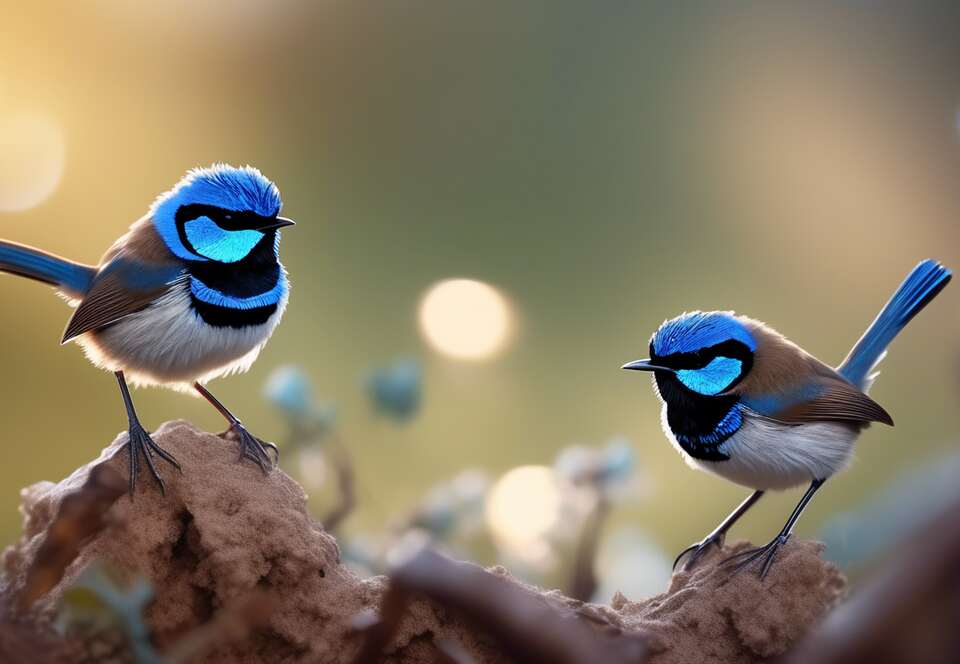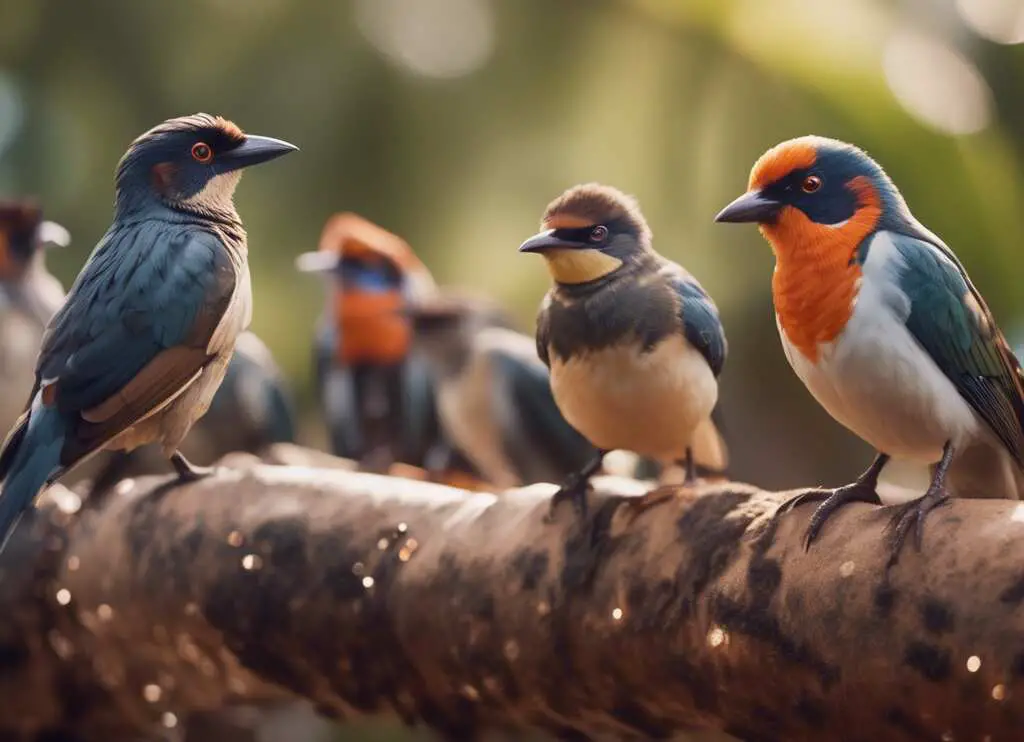Australia is renowned for its unique wildlife, and the avian population of the country is no exception. When it comes to bird species, Australia boasts an incredibly diverse range that captivates bird enthusiasts and researchers alike. The continent’s distinct ecosystems have provided a habitat for a remarkable number of bird species, making it a birdwatcher’s paradise. Let’s delve into the fascinating world of Australian birds and explore the question, “How many species of birds are there in Australia?”
Table of Contents [show]
The Number of Bird Species in Australia
The Rich Avian Diversity of Australia
Australia is home to a staggering variety of bird species, with estimates suggesting that there approximately 900 different types of bird species found across the continent. From vibrant parrots to majestic birds of prey, Australia’s avifauna is as diverse as it is captivating. The unique evolutionary history of the continent has led to the evolution of many endemic bird species, making Australia a hotspot for bird biodiversity.
Endemic Bird Species in Australia
One of the most remarkable aspects of Australia’s bird population is the high number of endemic species. Endemic species are those that are found exclusively in a specific geographic region, and Australia has several unique bird species that are not found anywhere else in the world. Iconic birds such as the Emu, Superb Lyrebird, and the Kookaburra are just a few examples of the endemic bird species that call Australia home.
Threatened Bird Species in Australia
While Australia’s avian diversity is undoubtedly impressive, it is essential to acknowledge the threats that many bird species face in the country. Habitat destruction, climate change, and introduced predators have put significant pressure on various bird populations in Australia. As a result, several bird species are classified as threatened or endangered, highlighting the importance of conservation efforts to protect Australia’s unique avian biodiversity.
Conservation Efforts and Birdwatching in Australia
Birdwatching is a popular pastime in Australia, with bird enthusiasts flocking to various regions of the country to catch a glimpse of rare and elusive species. Thanks to the conservation efforts of organizations and individuals across Australia, many bird species have been protected, and their habitats preserved. National parks and wildlife sanctuaries play a crucial role in safeguarding Australia’s birdlife and providing a safe haven for both endemic and migratory bird species.
Australia is home to a remarkable array of bird species, showcasing the continent’s rich avian diversity. With approximately 900 different types of birds, including many endemic species, Australia offers a unique and fascinating landscape for bird enthusiasts to explore. While conservation challenges exist, efforts to protect Australia’s birdlife continue to make a positive impact. Whether you are a dedicated birdwatcher or simply appreciate the beauty of nature, Australia’s bird species are sure to captivate and inspire awe.

Conservation Efforts for Australian Bird Species
Australia is a land rich in diverse bird species, with approximately 900 different kinds of birds inhabiting its varied landscapes, from deserts to rainforests to coastal regions. As a continent that is home to a wide array of unique birdlife, conservation efforts play a crucial role in ensuring the survival and protection of these avian species.
Importance of Conservation Efforts
Conservation efforts for Australian bird species are essential to safeguard the biodiversity of the region. Birds not only play a vital role in maintaining the ecosystem by pollinating plants and controlling insect populations but also serve as indicators of environmental health. By protecting bird species, we can help preserve the delicate balance of nature and ensure the sustainability of natural habitats.
Threats to Australian Bird Species
Australian bird species face numerous threats that put their populations at risk. Habitat loss due to deforestation, urbanization, and land clearance is one of the primary challenges confronting many bird species. Climate change is another significant threat, leading to disruptions in migration patterns, food availability, and nesting habitats. In addition, invasive species, pollution, and illegal wildlife trade further exacerbate the challenges faced by Australian birds.
Conservation Strategies
To address the threats facing Australian bird species, various conservation strategies and initiatives have been implemented. One of the key approaches is the establishment of protected areas such as national parks and wildlife reserves to safeguard critical habitats for birds. These protected areas provide safe havens where birds can breed, feed, and thrive without the pressures of human activities.
Community Engagement and Education
Community engagement and public awareness are crucial components of successful bird conservation efforts. Engaging local communities, birdwatchers, and conservation organizations in monitoring bird populations, habitat restoration, and research projects can help raise awareness about the importance of protecting Australian bird species. Educational programs, workshops, and events focused on bird conservation play a vital role in fostering a sense of stewardship and responsibility towards the preservation of birdlife.
Research and Monitoring
Research and monitoring programs are essential for assessing the status of bird populations, identifying conservation priorities, and evaluating the effectiveness of conservation measures. By conducting surveys, banding programs, and scientific studies, researchers can gather valuable data on bird species, their behaviors, movements, and ecological requirements. This information is critical for developing evidence-based conservation strategies and adaptive management plans.
Collaborative Efforts
Collaboration among government agencies, non-profit organizations, research institutions, and local communities is key to the success of bird conservation efforts in Australia. By working together and pooling resources, expertise, and knowledge, stakeholders can implement integrated conservation plans that address the complex challenges facing Australian bird species. Partnerships and collaborations at local, national, and international levels can lead to more effective conservation outcomes and ensure the long-term survival of Australia’s diverse birdlife.
Conservation efforts for Australian bird species are essential to protect the rich biodiversity of the continent and secure a sustainable future for avian populations. By addressing threats, implementing conservation strategies, engaging communities, conducting research, and fostering collaborations, we can work towards ensuring the survival and well-being of Australia’s unique birds for generations to come. Let us all play our part in preserving the natural heritage of this remarkable land and protecting the precious feathered inhabitants that call it home.
Conclusion
In Australia, the rich and diverse avian population is a source of wonder and fascination for both locals and tourists alike. With over 900 different species, the country boasts a remarkable array of birds, ranging from the iconic Emu and Laughing Kookaburra to the endangered Swift Parrot and Gouldian Finch. Each of these species plays a vital role in maintaining the delicate balance of the Australian ecosystem, making their conservation of utmost importance.
Conservation efforts for Australian bird species have been a key focus for environmental organizations and government bodies. The threats faced by these birds, including habitat loss, climate change, pollution, and invasive species, have led to a number of initiatives aimed at protecting and preserving their populations. Organizations such as BirdLife Australia work tirelessly to monitor bird species, conduct research, and implement conservation projects to safeguard their future.
One of the most pressing issues facing Australian bird species is habitat loss. The destruction of natural habitats for urban development, agriculture, and mining activities has resulted in many bird species losing their homes and sources of food. To address this challenge, conservationists are working to create protected areas, restore degraded habitats, and raise awareness about the importance of preserving natural landscapes for both birds and other wildlife.
Climate change poses another significant threat to Australian bird species. Rising temperatures, changing rainfall patterns, and extreme weather events can disrupt breeding cycles, alter migration patterns, and reduce food availability for birds. Conservation efforts include advocating for policies to reduce greenhouse gas emissions, supporting research on the impacts of climate change on bird populations, and implementing adaptation strategies to help birds cope with changing environmental conditions.
Pollution is also a major concern for Australian bird species, with contaminants such as plastic debris, oil spills, and pesticides posing risks to their health and survival. Conservationists are working to reduce pollution through education campaigns, clean-up initiatives, and advocacy for stronger environmental regulations to protect bird habitats from harmful substances.
Invasive species present a significant threat to native Australian bird species by competing for resources, predating on eggs and nestlings, and spreading diseases. Efforts to control invasive species include trapping and removal programs, biosecurity measures to prevent new introductions, and research on the most effective ways to manage invasive populations without harming native wildlife.
The conservation of Australian bird species requires a coordinated and sustained effort from government agencies, environmental organizations, researchers, and the general public. By raising awareness about the importance of preserving biodiversity, supporting habitat restoration projects, and implementing measures to address threats such as habitat loss, climate change, pollution, and invasive species, we can ensure that future generations will continue to marvel at the beauty and diversity of Australia’s avian inhabitants.



